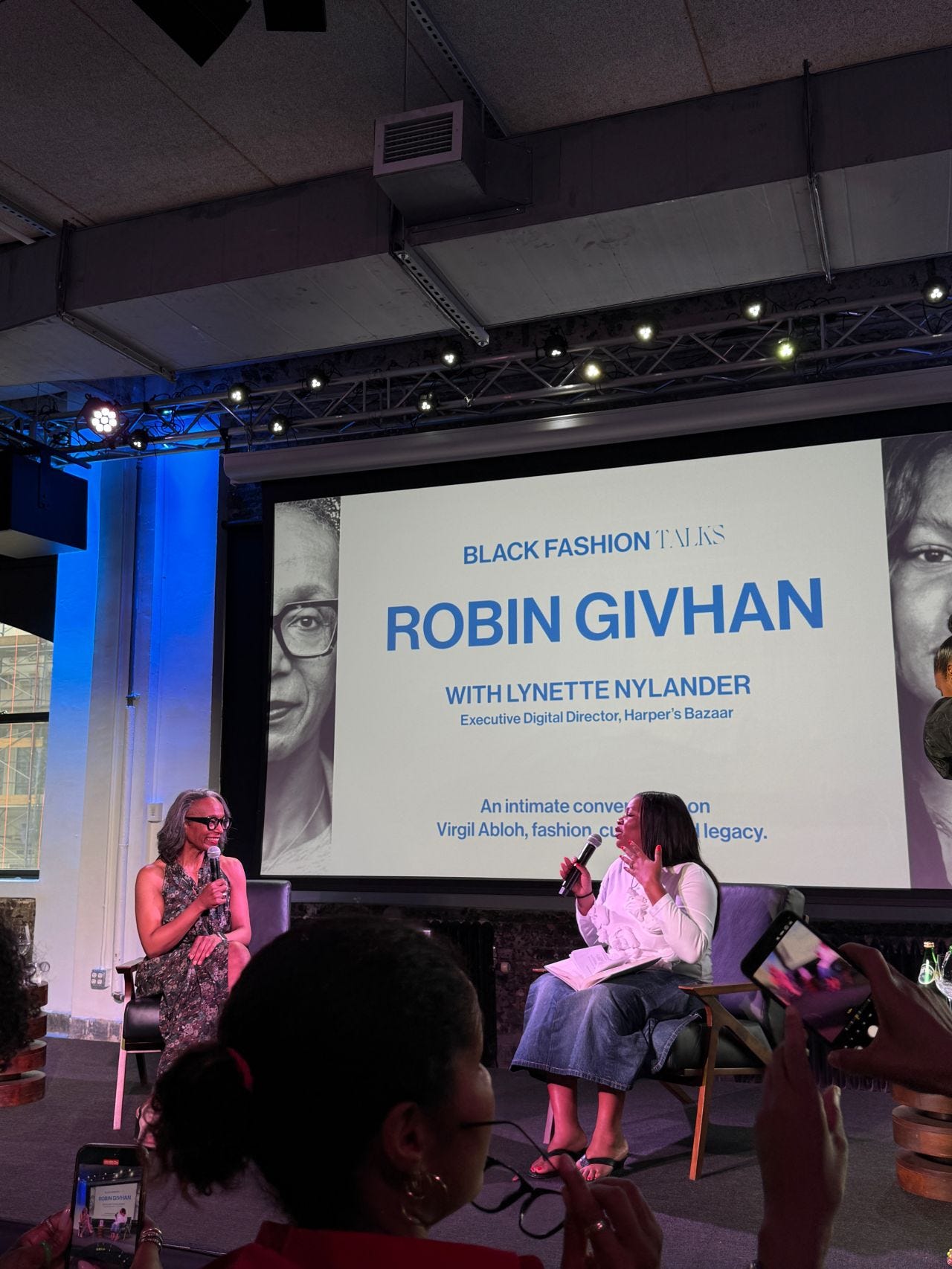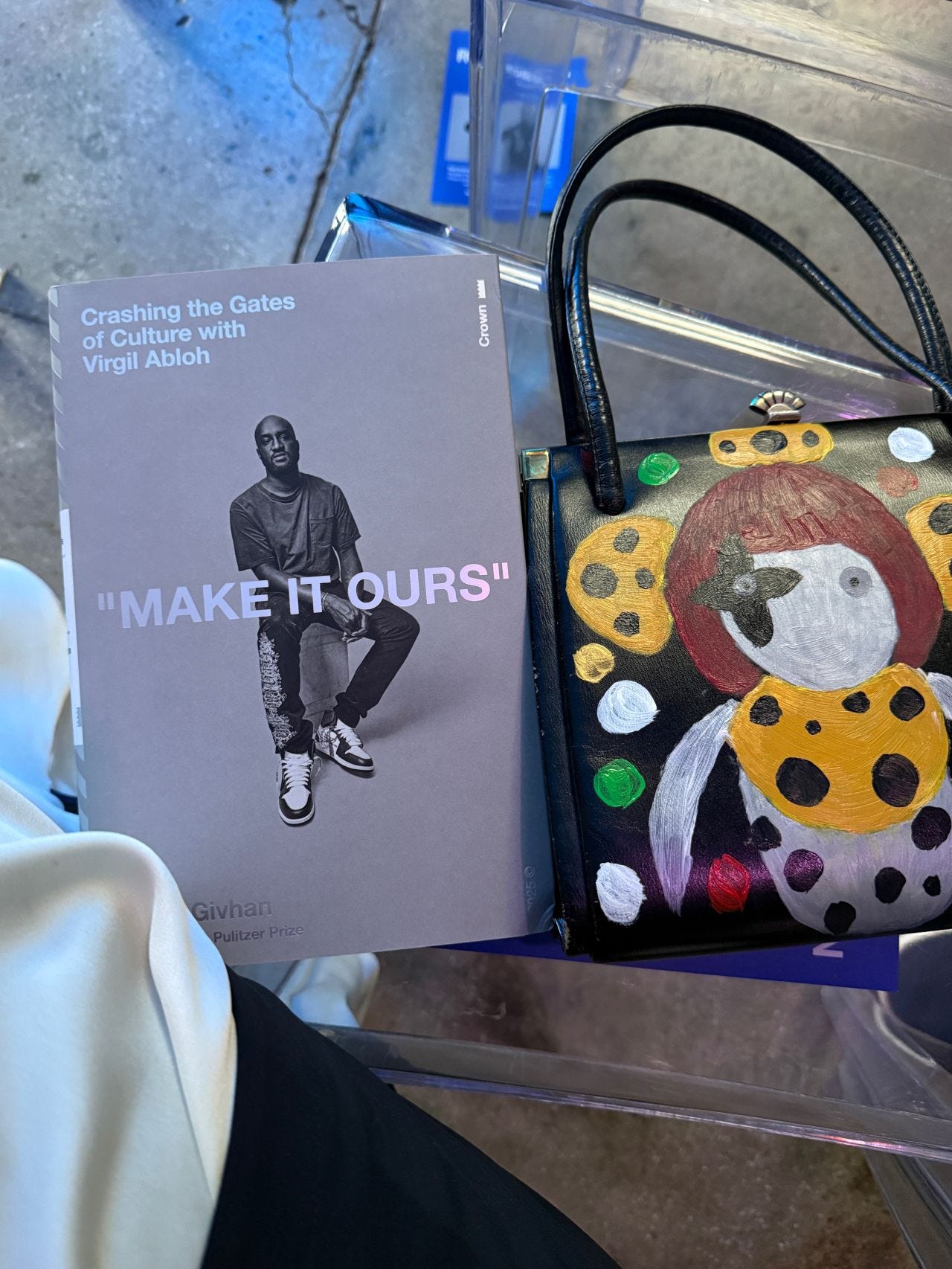Robin Givhan on Virgil Abloh’s Legacy: “It’s not or, it’s and.”
More than a biography, Make It Ours is a powerful cultural history of the intersection of race and luxury
My favorite fashion critic gave a talk about her new book on Monday night and I had the pleasure of attending. Robin’s award-winning work is my North Star, the kind of piercing, intelligent and courageous writing I aspire to be known for.
Make It Ours is an insightful exploration of fashion culture through the lens of Virgil Abloh’s life. I’m a few chapters in and I’m loving how Robin situates his rise within the context of streetwear’s explosion, the changing perception of luxury and social media’s democratizing effect on fashion.
“There was for me this tension between the work that I saw and reviewed as a critic (and was often critical of) and the connections that he had with his customers and a community of people that he connected with on social media and in real life,” Robin said. She was referring to the contrast between public perception of his work (many did not consider his collections novel or original) and his lasting impact on the industry as a prolific collaborator and the first Black artistic director in Louis Vuitton’s 164-year history.
For all his influence, Abloh was highly controversial, not the least because of his “3% rule,” which claimed that if you only tweak something by three percent, it can be deemed innovative. As many can attest, he applied this rule liberally, creating products that often sparked accusations of plagiarism. Still, his fans loved him and what he represented. “They regarded him with communion,” Robin wrote in The Washington Post. “The gift that he gave to aspiring Black designers was the ability to see themselves succeeding within a fashion system that had tantalized folks for generations.”
Beyond his social currency, Abloh was incredibly talented and hard working. He may not have been a skilled fashion designer but he excelled at injecting into Louis Vuitton a broad and inclusive definition of luxury he’d cultivated over time. There will always be the old, Eurocentric view of luxury but “Virgil opened up another lane,” Robin said. Illustrating this idea, she commented on museum nomenclature for cataloguing. A handmade French lace will typically be found in the fine arts section for example, as an object of institutionalized luxury. Meanwhile, a hand carved chair from Ghana will likely sit in the archeological artifact section, a stigmatised classification of African ingenuity. For Abloh, the hand carved chair is luxury too; “It’s not or, it’s and.”
Furthermore, Abloh—who started skateboarding and deejaying as a teen—held streetwear in high esteem, and throughout his career, he elevated the art form to its rightful luxury place. “He held Supreme in the same high regard as Hermès and Louis Vuitton,” Robin writes. Under him, a little black dress that bore the words "little black dress” was luxury if it signified something to the wearer. To those in the know, the dress satirized codes of appropriateness and propriety, Robin writes, so buying into the look meant being in on poking fun at the establishment (and signalling that).
Abloh’s spirit of inclusivity was not just a philosophical exercise. He actively sought out collaborators who look like him and invited outsiders through the gilded corridors of luxury fashion. Robin told the story of an Off-White show one evening in Paris, for which Abloh randomly invited groups of passersby, “Hey I’m having a show, turn up!” He was committed to pulling back the curtains and demystifying the industry. He wasn’t so much interested in dismantling the establishment as he was in making it work for him. “He didn’t see joining corporate as selling out,” Robin said. Make It Ours, the title of the book, is perhaps in direct reference to that.
At the time of Abloh’s death, I was struck by the common word his friends, colleagues and admirers used to describe him: “He was kind.” When he was kind, it didn’t undermine his sense of confidence, Robin said. To sit atop the luxury fashion hierarchy as Louis Vuitton’s artistic director and remain kind to those around you is no small feat in an industry that trades in excess praise and inflated egos. But Abloh will always be remembered as a kind man.
Make It Ours is a fascinating read about a man who changed fashion forever. I will have more to share in the next couple weeks. If you’d like to grab your own copy, you can purchase it here.
Until next time,
Shelcy
PS: I might earn a commission from my affiliate link to the book.






